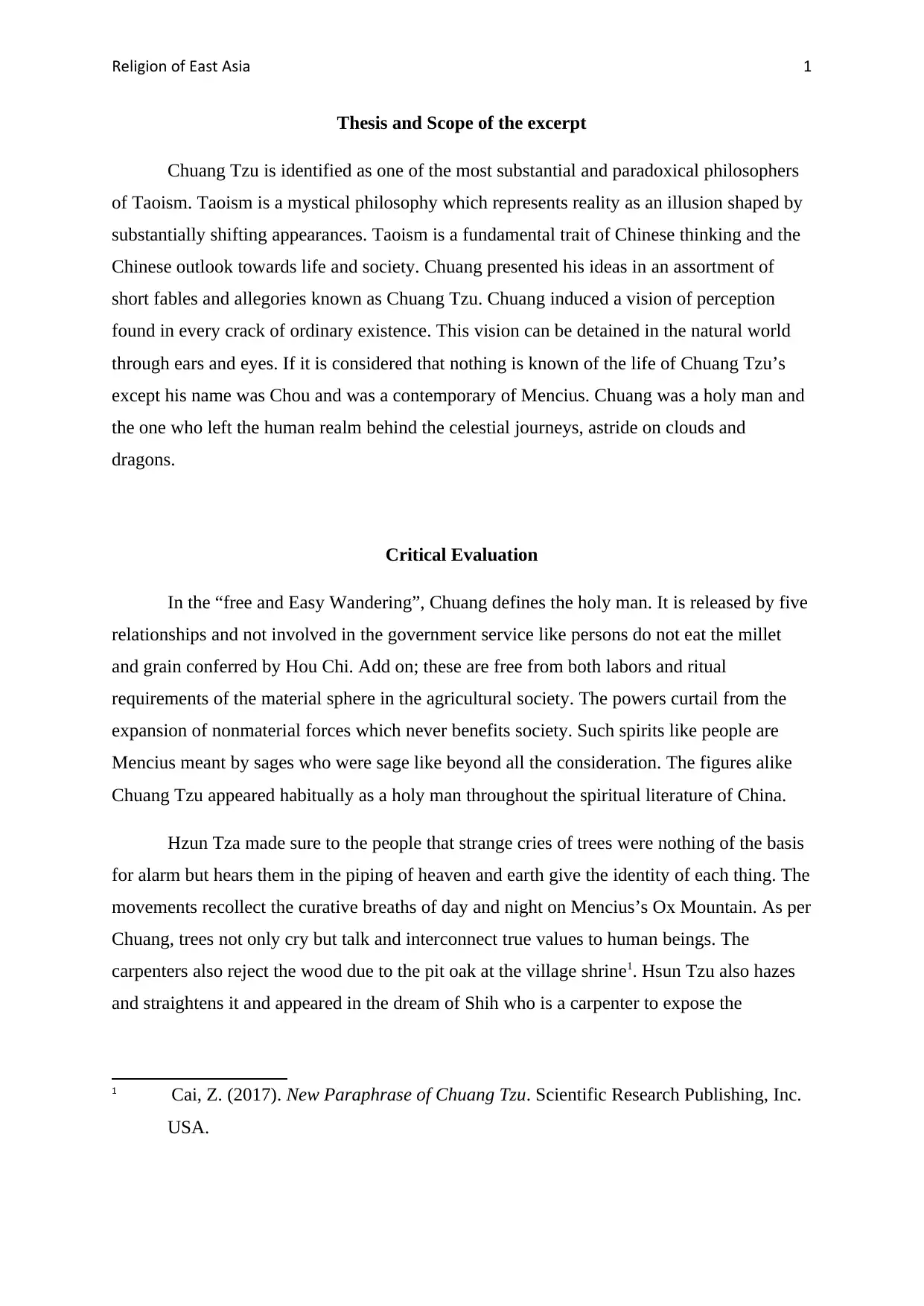ASIA 1311: Critical Review Assignment on East Asian Religions
VerifiedAdded on 2023/04/21
|4
|778
|238
Report
AI Summary
This report critically analyzes Chuang Tzu's philosophy within the context of East Asian religions, specifically focusing on Taoism. The report begins by establishing the thesis and scope of Chuang Tzu's work, identifying Taoism as a mystical philosophy emphasizing the illusory nature of reality. It explores Chuang Tzu's ideas through fables and allegories, highlighting the concept of perception in everyday existence. The critical evaluation section examines the holy man as defined by Chuang Tzu, contrasting his views with those of thinkers like Mencius and Hsun Tzu. The report discusses characters like Shu-shan No-Toes and his encounters with brutality, as well as the concept of undifferentiated wholeness. The analysis references scholarly sources to support its claims, providing a comprehensive overview of Chuang Tzu's contributions to East Asian religious thought. The report fulfills the assignment requirements of a critical review with footnotes/endnotes and a bibliography.
1 out of 4





![[object Object]](/_next/static/media/star-bottom.7253800d.svg)